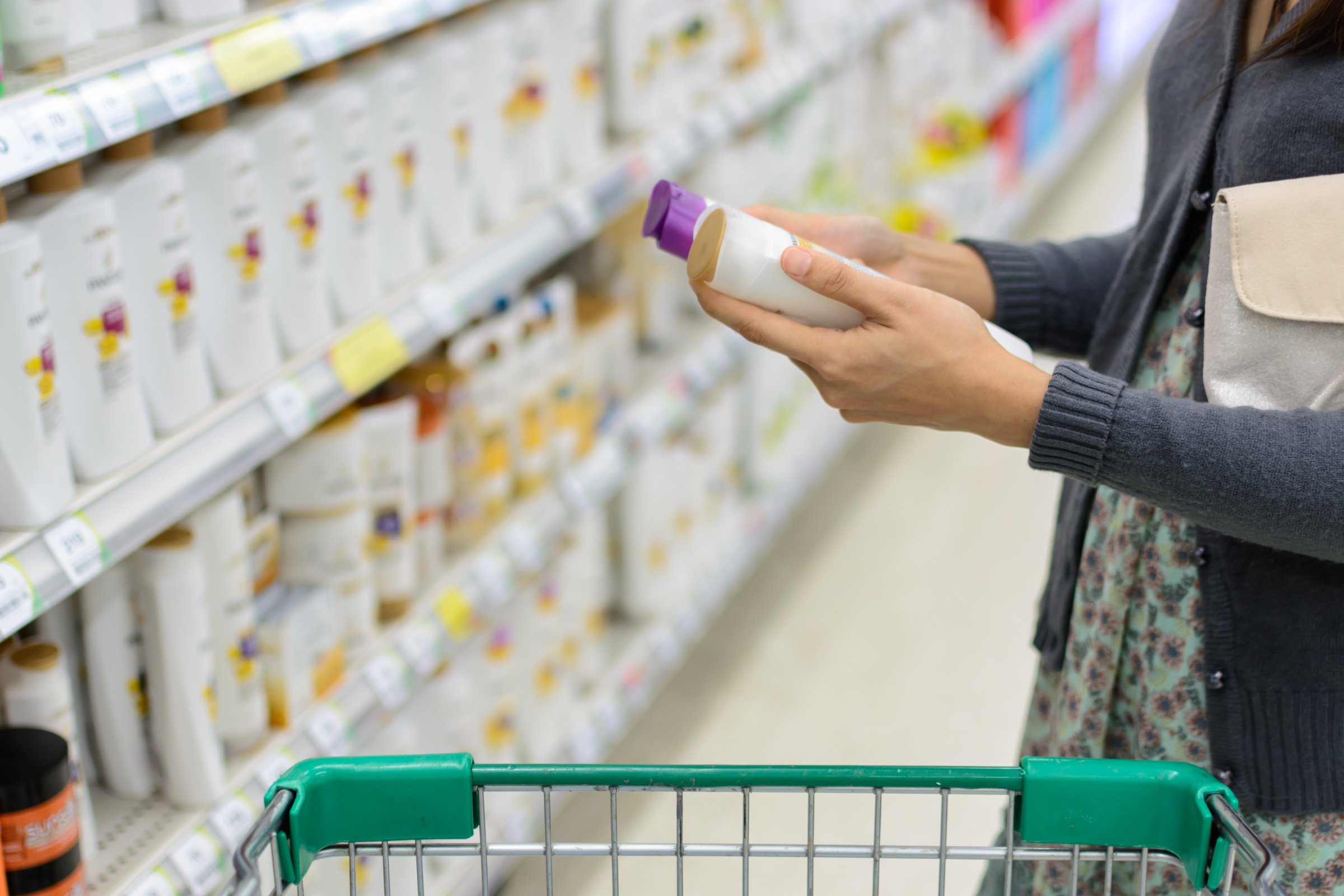
Many parents were shocked to learn that a Missouri jury recently ordered Johnson & Johnson to pay $72 million to the family of Jacqueline Fox, whose death by ovarian cancer was linked to her daily use of talcum-based Johnson’s Baby Powder and Shower to Shower products. You know the product—that sweet baby scent, the soft puff of powder.
For decades, Fox used these talc powders on her most sensitive body parts. And for decades, according to the case, Johnson & Johnson knew about the cancer link but failed to warn consumers.
This might seem shocking. Millions of us have put these products on our bodies or our babies’ butts with no idea of the possible health risk.
But it’s actually not surprising. The fact is, many personal care products on store shelves—products we lather in our hair, rub on our skin, and put in our babies’ bathtubs—contain chemicals with known links to health problems, with no warnings at all to consumers.
Many of us assume the companies are using the latest science as a guide to choose the safest ingredients, especially for products used on babies.
We should be able to expect that.
Unfortunately, nobody is watching the store. Companies in the U.S. are allowed to put ingredients into personal care products with no required safety testing, and without disclosing all the ingredients.
For over a decade, I worked with the Campaign for Safe Cosmetics, the coalition of health and environmental groups at the forefront of researching the ingredients used in personal care products. We sent hundreds of products to labs to find out if they contained compounds not listed on labels; many did.
We discovered two chemicals that have been linked to cancer, formaldehyde and 1,4 dioxane, in dozens of leading baby shampoos and bath products. People were shocked. Two years later, after we reported that Johnson & Johnson was selling formaldehyde-free versions of their baby products in Europe and other countries, the company announced they would reformulate their products worldwide to remove the ingredient and others of concern.
It shouldn’t have to work this way. Companies should be using the safest possible ingredients in the first place, and the government should be holding them accountable to that.
In Europe, you won’t find talc in many baby powders, the skin-lightening ingredient hydroquinone in skin creams, lead acetate in hair dye, or many other toxic substances because they are banned from personal care products. Here, you can find those substances in personal care products, with no health warnings.
In the U.S., the Cosmetics Ingredient Review Panel, a non-governmental body that shares offices with the cosmetics industry trade association, is in charge of determining whether ingredients are safe. Even if they do recommend against using one, companies are free to ignore their recommendations.
Congress is finally considering updating the antiquated 1938 cosmetics laws, which regulates cosmetics sold in the U.S. In April of last year, Senators Senators Dianne Feinstein, D-Calif., and Susan Collins, R-Maine introduced a bipartisan bill, the Personal Care Products Safety Act of 2015, that would give the FDA more authority to regulate the cosmetics industry.
But the bill must be strengthened; consumer groups are calling for tougher safety standards and better disclosure provisions so companies can’t hide toxic ingredients from consumers. The cosmetics and chemical industries are fighting hard to make sure that not much changes.
The most important thing I’ve learned from my years of advocating for safer beauty products: When we stand together, we can change the market. We can change products and companies, too.
We also need to change the laws so that consumers and companies have access to the best information to make the most informed choices about the safest products. Together, we can give the beauty industry a makeover.
More Must-Reads From TIME
- The 100 Most Influential People of 2024
- Coco Gauff Is Playing for Herself Now
- Scenes From Pro-Palestinian Encampments Across U.S. Universities
- 6 Compliments That Land Every Time
- If You're Dating Right Now , You're Brave: Column
- The AI That Could Heal a Divided Internet
- Fallout Is a Brilliant Model for the Future of Video Game Adaptations
- Want Weekly Recs on What to Watch, Read, and More? Sign Up for Worth Your Time
Contact us at letters@time.com